Discover 11 hidden attractions, cool sights, and unusual things to do in Warwick (United Kingdom). Don't miss out on these must-see attractions: Warwick Castle, Warwick Racecourse, and Collegiate Church of St Mary. Also, be sure to include The Mill Garden in your itinerary.
Below, you can find the list of the most amazing places you should visit in Warwick (England).
Table of Contents
Warwick Castle
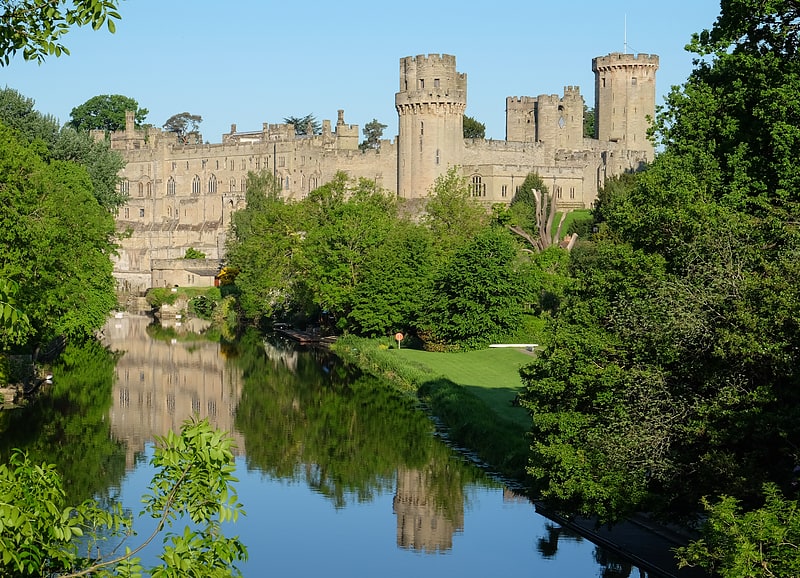
Iconic clifftop fortress and dungeons. Warwick Castle is a medieval castle developed from a wooden fort, originally built by William the Conqueror during 1068. Warwick is the county town of Warwickshire, England, situated on a meander of the River Avon. The original wooden motte-and-bailey castle was rebuilt in stone during the 12th century. During the Hundred Years War, the facade opposite the town was refortified, resulting in one of the most recognisable examples of 14th-century military architecture. It was used as a stronghold until the early 17th century, when it was granted to Sir Fulke Greville by James I in 1604. Greville converted it to a country house, and it was owned by the Greville family until 1978, when it was bought by the Tussauds Group.
In 2007, the Tussauds Group was purchased by the Blackstone Group, which merged it with Merlin Entertainments. Warwick Castle was then sold to Nick Leslau's investment firm, Prestbury Group, under a sale and leaseback agreement. Merlin continues to operate the site under a renewable 35-year lease.[1]
Address: Castle Hill, CV34 4HB Warwick
Warwick Racecourse
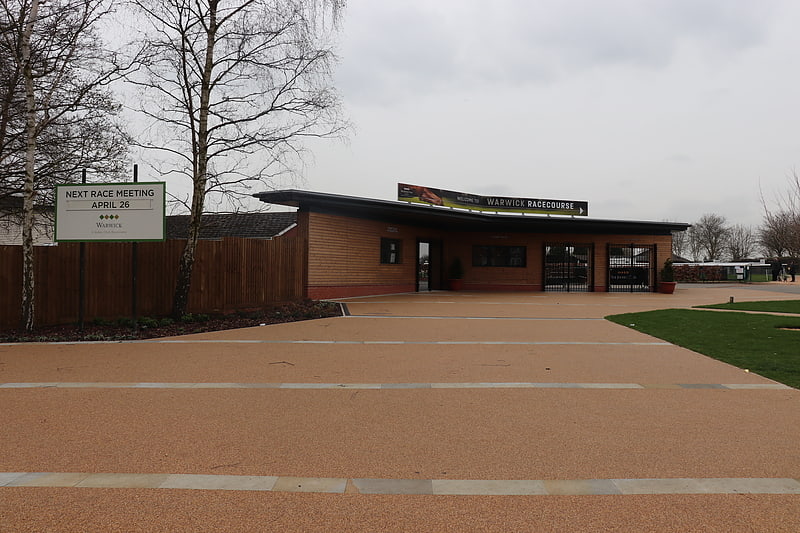
Racecourse in Warwick, England. Warwick Racecourse is a horse racing course in Warwick, England. It is a National Hunt racing course and has a programme of 25 meetings throughout the year, many of which are televised. The first stand was built in 1808, and its most recent redevelopment was completed in 2018. In the racecourse is a nine-hole golf course and a golf driving range. The area is a popular place for local people to walk their dogs. There is parking next to the course and it is a five-minute walk away from the town centre.[2]
Address: Hampton Street, CV34 6HN Warwick
Collegiate Church of St Mary
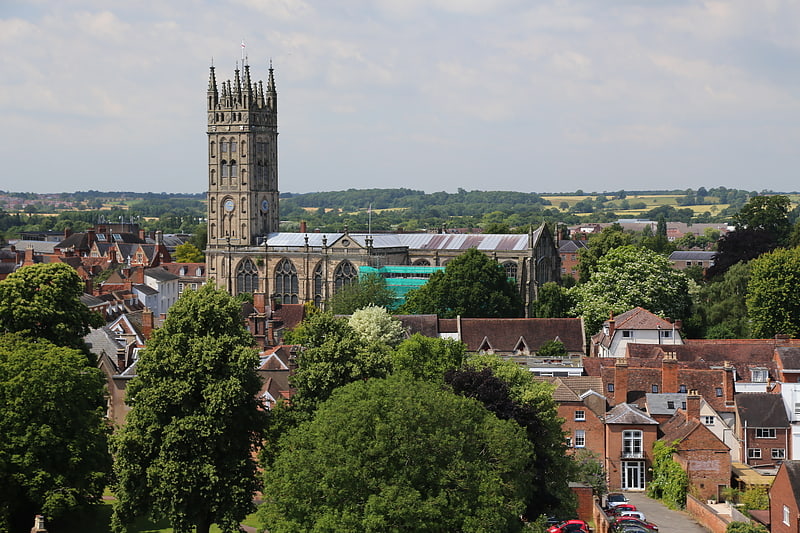
Collegiate church. The Collegiate Church of St Mary is a Church of England parish church in Warwick, Warwickshire, England. It is in the centre of the town just east of the market place. It is grade I listed, and a member of the Major Churches Network.
The church has the status of collegiate church as it had a college of secular canons. In governance and religious observance it was similar to a cathedral (although not the seat of a bishop and without diocesan responsibilities). There is a Bishop of Warwick, but this is an episcopal title used by a suffragan bishop of the Diocese of Coventry.[3]
Address: Church St, Warwick
The Mill Garden

Garden in Warwick, England. The Mill Garden is a private garden adjacent to Warwick Castle measuring half an acre open to the public and situated on the bank of the River Avon in Warwick, Warwickshire, England. It is owned by Julia Measures, whose family has owned the gardens since 1938 and whose father Arthur worked on it for 60 years. Its informal planting to highlight views of the river has made this garden well known among some garden enthusiasts. Old Castle Bridge, the remains of which are visible from the garden, once carried most of the traffic to Warwick over the River Avon but the bridge now lies in ruins. When the castle was being constructed the garden was often used as a stonemasons yard. Swans sometimes nest near the garden.[4]
Address: 55 Mill Street, CV34 4HB Warwick
Lord Leycester Hospital
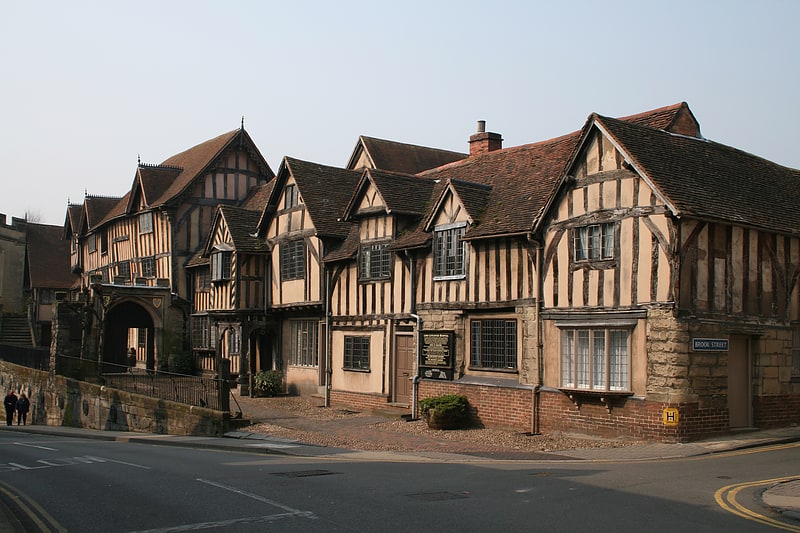
Tourist attraction in Warwick, England. The Lord Leycester Hospital is one of the best preserved examples of medieval courtyard architecture in England and is a charity supporting ex-servicemen. It is located in Warwick, England, next to the West Gate, on High Street. It is a Grade I listed building. The Hospital is a prominent and internationally famous feature of Warwick. For almost 900 years buildings have been erected and civic activity has taken place on the site, starting with the chapel built in 1126. The site was donated by the 12th Earl of Warwick in the 14th century to the United Guild of the Holy Trinity and St George. The Guild Hall, Great Hall and Master's House were constructed in the late 15th century. Over the centuries, the ancient buildings and 500 year old gardens have been admired by many famous visitors such as Charles Dickens and Oscar Wilde, by Kings and Queens, such as King George V and the Queen Mother and ordinary travellers from around the world.[5]
Address: 60 High St, CV34 4BH Warwick
Market Hall Museum
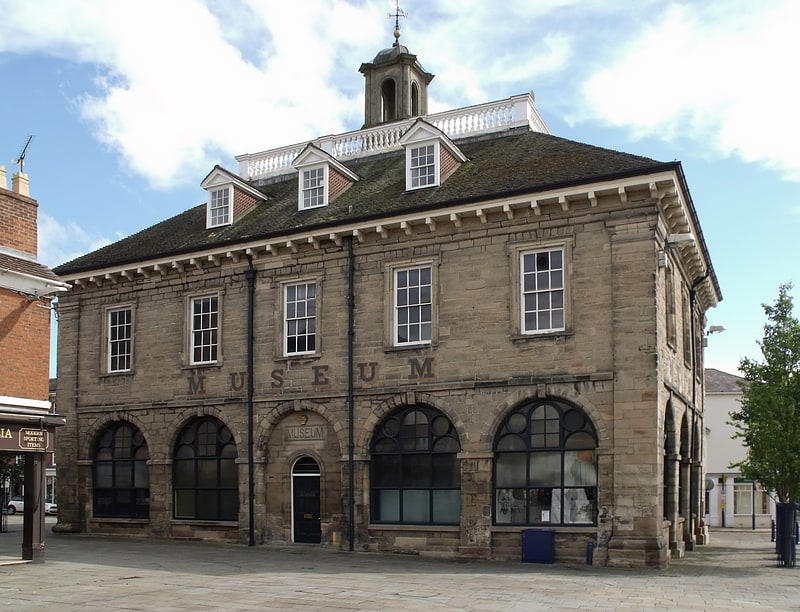
Museum in Warwick, England. Market Hall Museum is an historic museum located in Warwick, in Warwickshire, England. The Market Hall forms part of The Warwickshire Museum, alongside St John's House. The Warwickshire Museum is operated by Heritage and Culture Warwickshire. The collections on display at Market Hall are primarily focused on objects in the fields of archaeology, geology and natural history, and particularly those local to Warwickshire.[6]
Address: Market Pl, CV34 4NS Warwick
Saltisford Canal Arm
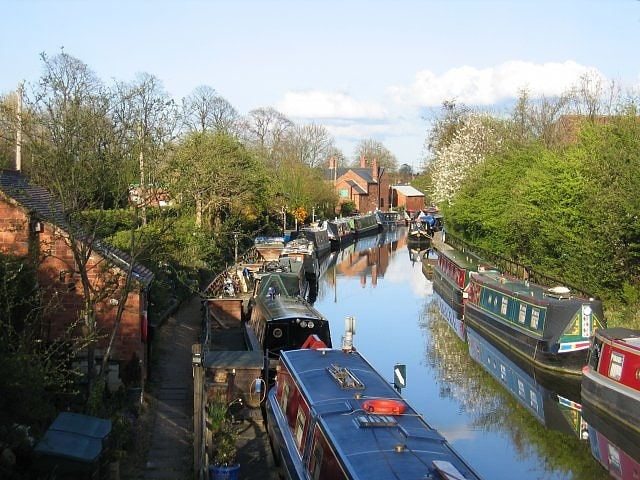
The Saltisford Canal Arm is a short stretch of canal located in the town of Warwick, Warwickshire, England. Opened in the 1790s, originally it wasn't an arm at all, but the start of the Warwick / Birmingham Canal. It took on the appearance of an branch when the Warwick / Napton canal, which junctions at the Birmingham Road / Budbrooke Industrial Estate, was completed. It is the last surviving branch of the much longer, nationally known Grand Union Canal. The arm was first opened in 1799 as a terminus for the Warwick and Birmingham Canal. Its initial purpose was purely to allow goods to be transported near to the town centre with its castle and market. However, the building of the gas works next to the end of the arm in 1822 also greatly increased its usage.
It stayed under the control of the W&B canal, through various mergers, until 1927, when it was purchased by the Regent's Canal company which, two years later, was renamed the Grand Union. The 1930s saw the site used extensively as a workyard and storage area during the construction of the nearby Hatton Locks. The Transport Act 1947 saw the canal network as a whole nationalised and British Waterways was formed after the Transport Act 1962 which split control of the canals and railways between two different authorities. At this time, the arm, after leaving the main canal, passed under the Chiltern Main Line railway bridge and terminated at the back of what is now The Antelope Pub next to Sainsbury's, making it around 750 metres long. During the 1970s however, with the decline of the gasworks, the downsizing of the town market and the opening of the A46 bypass, usage of the arm decreased and it eventually fell into disuse.
It was during this period that part of the arm was taken out of use and filled in. This led to the canal terminating just before the Chiltern Main Line, cutting its length to approximately 440 metres. The former canal bed is virtually untraceable, having been built over with houses and offices. All that remains is a well hidden bridge next to a car park. This led, in 1982, to the formation of the Saltisford Canal Trust which spent the next six years restoring the remainder of the route to its former glories. Further work was done in 2007, helped by a £2,000 grant from the Inland Waterways Association. The arm now houses several permanent boats, on which families live, as well as playing host to many travelling vessels and hiring out two boats for public use.[7]
St John's House Museum

Museum in Warwick, England. St John's House Museum is an historic house located in Warwick, just east of the town centre, in Warwickshire, England. It is now a museum, and has had a history spanning almost 900 years. To the side of the house is a small garden belonging to St John's and to the rear is the large St. Nicholas' Park. The museum is currently operated by Warwickshire Heritage and Culture's Museum Service, a branch of Warwickshire County Council. The current grade I listed building dates from around 1666, and is considered one of the most important buildings in Warwick.[8]
Address: St Johns, CV34 4NF Warwick
St Mary Immaculate Roman Catholic Church
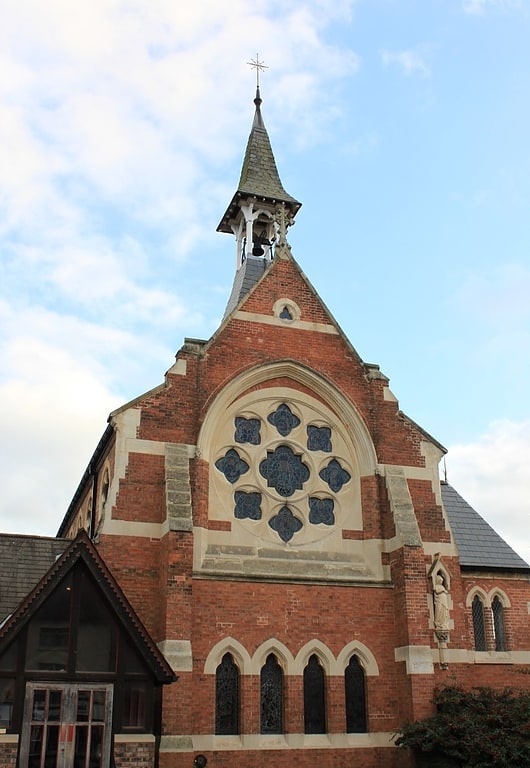
St Mary Immaculate is an active Roman Catholic parish church in the town of Warwick, England. It lies to the south west of the town on West Street outside the West Gate. The church was opened on 12 May 1860. The architect was Edward Welby Pugin, eldest son of the more famous Augustus Pugin. The church is built in red brick and Bath stone in the Decorated Gothic style and is a Grade II listed building. St Mary Immaculate was probably the first church in England to be dedicated to the Immaculate Conception after the definition of the dogma in 1854.
During the First World War (1914–1918) J. R. R. Tolkien, the author of over 56 books, including The Lord of the Rings, married parishioner Edith Mary Bratt in the church on 22 March 1916.
The church is linked to St Mary Immaculate Catholic Primary School which was originally next to the church. This building is now the church hall and St Mary Immaculate Catholic primary school occupies a much larger site next to Priory Park.[9]
Address: 45 West Street, Warwick
Priory Park
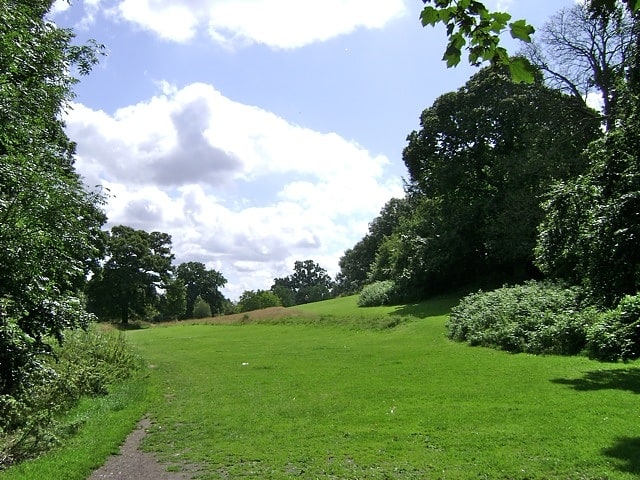
Park in Warwick, England. Priory Park is an urban park located in the centre of Warwick, England. Originally the land was the grounds of a 12th-century priory dedicated to St Sepulchre and built in 1124 but this was closed down by King Henry VIII during the dissolution of the Monasteries. It was then destroyed and a residential home was built in 1566 by a man named Thomas Fisher known as Hawkins. In the 17th century, the estate was owned by Sir Thomas Puckering, 1st Baronet and his heirs, including Sir Henry Puckering, 3rd Baronet who was MP for Warwickshire and then the borough of Warwick.
By 1850 the property had been taken over by the famous Warwickshire family, the Wises. During that year the Great Western Railway company were allowed to build an embankment to extend the line to Warwick station which was built in 1852 at the north-east of the estate. In 1926 Alexander W. Weddell, an American diplomat and his wife Virginia, a wealthy woman in her own right, purchased the property after seeing the advertisement that Priory House was to be demolished. They bought the house and shipped several thousand tons of the stones and other materials for the building of Virginia House, Richmond, Virginia in 1928. They signed the house to the Virginia Historical Society who still maintain it today. http:www.vahistorical.org/your-visit/virginia-house
The estate now is owned and managed by Warwick District council and is a public park. (Part of the park is owned by Warwickshire County Council but managed by WDC) There is very little evidence of the previous buildings in existence. In 1958 and 1979 there were international scout gatherings at the park and a plaque by one of the paths commemorates this. The AMIKARO referred to on the plaque means Friendship in Esperanto. Seven trees were planted, although 3 of these have since died and replaced in 2012, to spell AMIKARO.
In the 1970s Warwickshire County Council moved its record offices to the eastern part of the estate into a purpose built building. The public park area is composed of unimproved grass areas that are cut but not landscaped and there are many clumps of trees to explore. Until the late 1990s there was a small children's play area in the middle but this was removed. The nearest play area can be found a minute's walk north west from the park under the railway bridge in a smaller 5-acre (20,000 m2) park called Priory Pools. Because there are many burrows around the park European rabbits are a common sight, even to the casual observer. The total public area of the main park currently stands at 28.7 acres.
Famous artists have visited the park; Canaletto in the 1740s and in 1809 John Constable made a sketch. A painting by a Pre-Raphaelite artist John Brett was auctioned in 2018.
A free leaflet has been published which is both a nature and history walk around the Park and Priory Pools. Available at Warwick Tourist Information Centre, Jury Street, Warwick (with effect from February 2016) and also online.[10]
St Michael's Leper Hospital
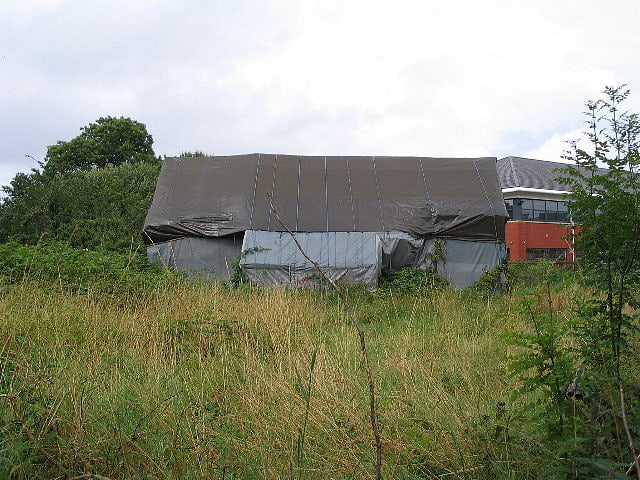
Historical landmark in Warwick, England. The remaining ruins of St Michael's Leper Hospital, a mediaeval hospital, lie in a patch of scrubland in the Saltisford area in the north of the town of Warwick, England, and are of the last remaining leper hospital in England. The hospital, which was founded by Roger, Earl of Warwick in about 1135, is classified by English Heritage as a scheduled monument. The remains of two of the hospital buildings can still be seen on the site - a chapel and the 15th century, two-storey Master's House. They are both grade II* listed buildings.[11]